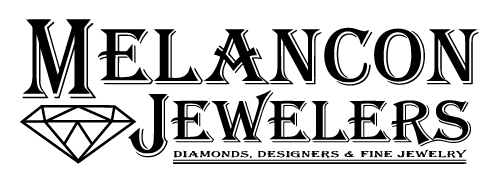The 4Cs of Diamonds Every Buyer Should Know About
Buying a diamond is a special decision. Whether you're selecting an engagement ring or investing in fine jewelry, it helps to understand what you're paying for. The beauty and value of a diamond come down to four key factors, known as the 4Cs—cut, color, clarity, and carat. These qualities affect how the diamond looks, how it sparkles, and how much it costs.
How Cut Affects a Diamond's Brilliance
The cut is often considered the most important of the 4Cs because it impacts how the diamond reflects light. A well-cut diamond appears bright, with clear flashes of light, even from a distance. Cut refers not to the shape—such as round or oval—but to how well the diamond has been shaped and polished from its rough form.
A good cut balances proportions, angles, and symmetry. If the cut is too shallow or too deep, the diamond may look dull or dark. On the other hand, a skilled cut brings out the full sparkle of the stone. Diamond cuts are graded from Excellent to Poor, and a higher grade usually means more brilliance.
How Color Impacts the Diamond’s Appearance
Diamonds come in a range of shades, but most buyers look for diamonds that appear white or colorless. The diamond color scale, used by gem experts, starts at D (completely colorless) and ends at Z (light yellow or brown). The closer a diamond is to D, the more rare and valuable it is.
While small differences in color can be hard to notice with the eye, they do affect the price. Some people prefer warmer tones, especially when paired with yellow or rose gold settings. Others choose colorless diamonds for a bright, clean look. What matters most is finding a stone that looks good to you and suits the setting you want.
What Clarity Tells You About the Stone’s Quality
Clarity measures how many tiny marks are present inside or on the surface of a diamond. These marks are called inclusions (inside) or blemishes (outside). Most diamonds have some, but many are so small they’re hard to see without magnification.
Clarity grades range from Flawless (no visible marks under 10x magnification) to Included (marks that can be seen without magnification). Most diamonds used in jewelry fall somewhere in between. A diamond with a Slightly Included (SI) grade, for example, might look just as clean to the eye as a higher-grade stone but cost much less.
What Carat Really Means
Carat refers to how much a diamond weighs. One carat equals 200 milligrams. As carat weight increases, so does the size of the diamond—and usually the price. However, carat is not the only thing that affects how big a diamond appears. A well-cut diamond can look larger than another of the same weight if it reflects light better.
It’s also important to know that a small difference in carat weight doesn’t always mean a big difference in size. For example, a 0.90-carat diamond may look very close to a full carat but cost much less. That’s why buyers often look at a mix of all four Cs instead of focusing only on size.
While it might be tempting to go for the highest grade in each category, that approach can lead to a much higher cost. Working with a trusted jeweler can help you see the differences in person and make a smart decision based on real examples rather than only numbers on paper.
Ready to find the diamond that’s right for you? Visit us at Melancon Jewelers today to explore our handpicked selection and speak with our expert jewelers. Whether you're designing something custom or choosing a timeless classic, we’re here to help you make a choice that lasts a lifetime.


Post a Comment